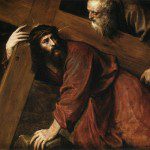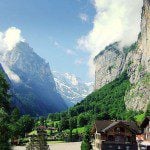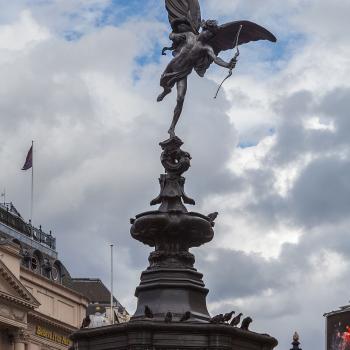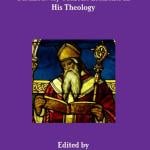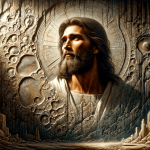
You’re probably aware of this: “The Prophet Announces Salt Lake Temple Open House Celebration Dates: This landmark house of the Lord will reopen for tours from April 2027 to October 2027”
Wonderful news. The open house is still more than two years away, of course, and the rededication will follow it. But it’s nice to have a definite date, to see light at the end of the tunnel.
More than a few people — myself among them — are hoping that President Nelson will somehow still be with us to rededicate the temple. That would be astounding. But he’s almost halfway into his hundred and first year, so we’ll have to wait and see.
In the meantime, it’s always good to think about the temple, and there is no more thoughtful guide to the subject than the late Hugh Nibley, who only made it to 94.5 years of age. Here are a few passages from him that are worth pondering:
“The three motifs that confront us wherever we turn in temple and tomb are eternity, family, and cosmos. As to family, the gods themselves do not appear in solitary splendor in the great temples, but always have the rest of the family along, as the individual in his tomb wants to be seen in the intimate and loving company of his wife and children; whether gods, kings, or commoners, they hold hands and embrace in an easy and affectionate manner.” (“The Greatness of Egypt,” 14)
“An important feature of Egyptian architecture of temple, tomb, and even palace is a door, sometimes shown as a curtain or lattice, through which a spirit can pass, a means of communication between two worlds; and the literature is full of ceremonial and mythical doors and gates and instructions on how to pass them.” (“The Greatness of Egypt,” 18)
“The archives were known in Egypt as the House of Life, housing the writings upon which the life of all things ultimately depended. It was a powerhouse humming with vital electricity, transmitting cosmic forces from heaven to earth, a place of deadly peril to any mortal not holding the necessary priestly credentials. . . .
“The House of Life where the books were copied and studied had from the earliest times the aspect of a university, a super graduate school. There it was that all questions relating to learned matters were settled. The place was always part of the temple, and the books contain the earliest poetry, for poiema means “creation” and the business of the Muses at the temple was to sing the creation song with morning stars.
“Naturally the hymn was sung to music, and some scholars would derive the first writing from musical notation. It was performed in a sacred circle or chorus, so that poetry, music, and the dance go out to the world from the temple, called by the Greeks the Museon, or shrine of the Muses.
“The creation hymn was part of the great dramatic presentation that took place yearly at the temple, dealing with the fall and redemption of man, represented by various forms of combat, making the place the scene of the ritual athletic contests sanctified throughout the world. The victor in the contest was the father of the race, the priest-king himself, whose triumphant procession, coronation, and marriage took place on the occasion, making this the seat and source of government (the king was always crowned in the temple rather than the palace).
“Since the entire race was expected to be present for the event, a busy exchange of goods from various distant regions took place, the booths of pilgrims serving as the market booths for great fairs, while the necessity of converting various and bizarre forms of wealth into acceptable offerings for the temple led to an active banking and exchange in the temple courts; the earliest “money” from the shrine of Juno Moneta at Rome is temple money. Since the place began as an observatory and all things were tied to the calendar and the stars, mathematics flourished and astronomy was a Muse.
“History was another Muse, for the rites were meant for the dead as well as the living, and memorials to former great ones (believed to be in attendance) encouraged the production of a marvelous art of portraiture, of sculpture and painting, which would have flourished anyway as architectural adornments, since the design and measurements (the middot) of the temple structure itself as a sort of scale model of the universe and cosmic computer were all-important; the architecture of the hierocentric structure was of primary concern.
“And since from that central point all the earth was measured and all the lands distributed, geometry was essential: “In the Beginning the One God promised Horus that he should inherit the land of Egypt, which was written in the Books by order of the Lord of All. . . . At the Division of the Lands it was decreed in writing.”
“The writings produced and copied in the House of Life were also discussed there, giving rise to philosophy but concerned largely with cosmology and natural science. In short, there is no aspect of our civilization that does not have its rise in the temple, thanks to the power of the written word. In the all-embracing relationships of the Divine Book everything is relevant. Nothing is really dead or forgotten; every detail belongs in the picture, which would be incomplete without it. Lacking such a synthesizing principle, our present-day knowledge becomes ever more fragmented, and our universities and libraries crumble and disintegrate as they expand. Where the temple that gave it birth is missing, civilization itself becomes a hollow shell.” (“Genesis of the Written Word,” CWHN 12:469, 472-73)

The crimes and horrors that are collected in the Christopher Hitchens Memorial “How Religion Poisons Everything” File™ are quite simply unending. Here’s another: “Clean water, seedling nurseries and school improvements bless lives in the Pacific Area: Villagers in Vanuatu receive water, students in Samoa and Papua New Guinea see school improvements, and people in Tonga have new seedling nurseries”
And, once again, theists have been caught shamelessly attempting to recruit children in their depravities: “February Friend to Friend Teaches Children About Sharing Jesus’ Love Through Service: Friend to Friend episode features Elder and Sister Bednar teaching how to plan, invite and serve”


